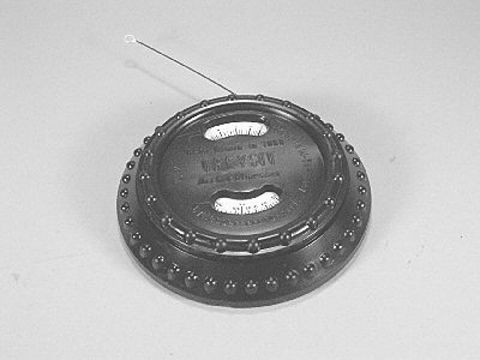Ok well i disagree with some of what you say, but this part I don't understand at all:
I don't know what you mean here or what you are suggesting I do?
EDIT: First, I apologize that I wrote my earlier comment w/o watching your entire video. As a consequence of that, I missed the fact that in addition to SURGING, your mower actually
is MISFIRING as well, albeit intermittently.
However, like others have said, you're not listening to advice, so here's some more you can not listen to.

"Lawnmower idle" is NOT "full RPM" or whatever you called it. Idle is much lower than full speed, which is probably somewhere between 3,330-3,600RPM. You need a TACHOMETER. Here is a write-up on a cheap, but VERY reliable one:"
Farmshow--Vibratach
Precise Engine Repair, 151 Roberts Rd., Yakima, Wash. 98908; www.perr.com: This company offers the Vibratach, a tool designed to read the rpm's on all engines and other rotating equipment.  ...
www.farmshow.com
I mentioned that your engine is surging (or, what I call "hunting"--for a steady speed, either under load or unloaded, when it should be at a [relatively] steady speed regardless of load. That's the governor's job, to keep the the RPMs as stable as possible, under the varying loads placed upon the engine for a given speed).
Surging can be caused by a bad fuel float valve seat, a leaking fuel float and/or dirt in the carburetor--or a combination of all three. But since you've swapped carbs, this is now a head-scratcher.
Surging can also be caused by a malfunctioning governor--but that is less likely than the chance that you're having an improper fuel/air ratio due to an obstruction in the fuel system.
Use the CHOKE As a Diagnositic Tool:
If it slows down, then your mixture is already too rich, as your hand is acting like a choke and richening the mixture further. As another person mentioned, remove the air filter and slowly, progressively cover the carburetor's air intake (with a LEATHER GLOVED HAND, because FIRE)l and note whether the engine speeds up or slows down. If it slows down, then your mixture is already too rich, the engine will slow down. But if the engine speeds up, then your mixture is too lean (which would again point to a FUEL OBSTRUCTION SOMEWHERE).
There should be a SCREEN on the gas pickup tube inside the gas tank. These can look clean but because their mesh is so fine, they can be clogged and need cleaning or replacing, depending upon design.
As a last resort, I would closely examined the holes that the governor wire hooks into, on the carb linkage, and see if you can tell that it used to be in a different hole by virtue of that hole being more elongated than the other holes. Even if they all look the same, you could still try hooking the governor's control rod into the next hole over from the one it's in, in either direction, and see if the surging goes away. But only do that AFTER you've determined whether or not the engine is reaching its specified maximum RPM. (Yes, You will have to look up what your engine's specified maximum RPM is. Try
https://www.manualslib.com/.
And if you do start experimenting with the governor's control rod, CHECK YOUR RPMS as you do so, because if you over-speed the engine, you may get to see what the connecting rod looks like, without even taking the engine apart.
Briggs & Stratton made a good small engine manual, probably back in the '80's. IMO, you need to read something like that, as it's clear, to me, that you need more THEORY AND KNOWLEDGE, to build a basic understanding of how small engines actually work. They now offer manuals for more modern, OHV engines, as well (not sure which style engine you have but try to be Brigg's GENERAL small engine manual and the specific manual for your engine, as well (
see the FREE manuals library, linked above). You need to get a basic repair manual and READ it--you will find that many of the questions you're asking are answered by such a manual. Good luck.

